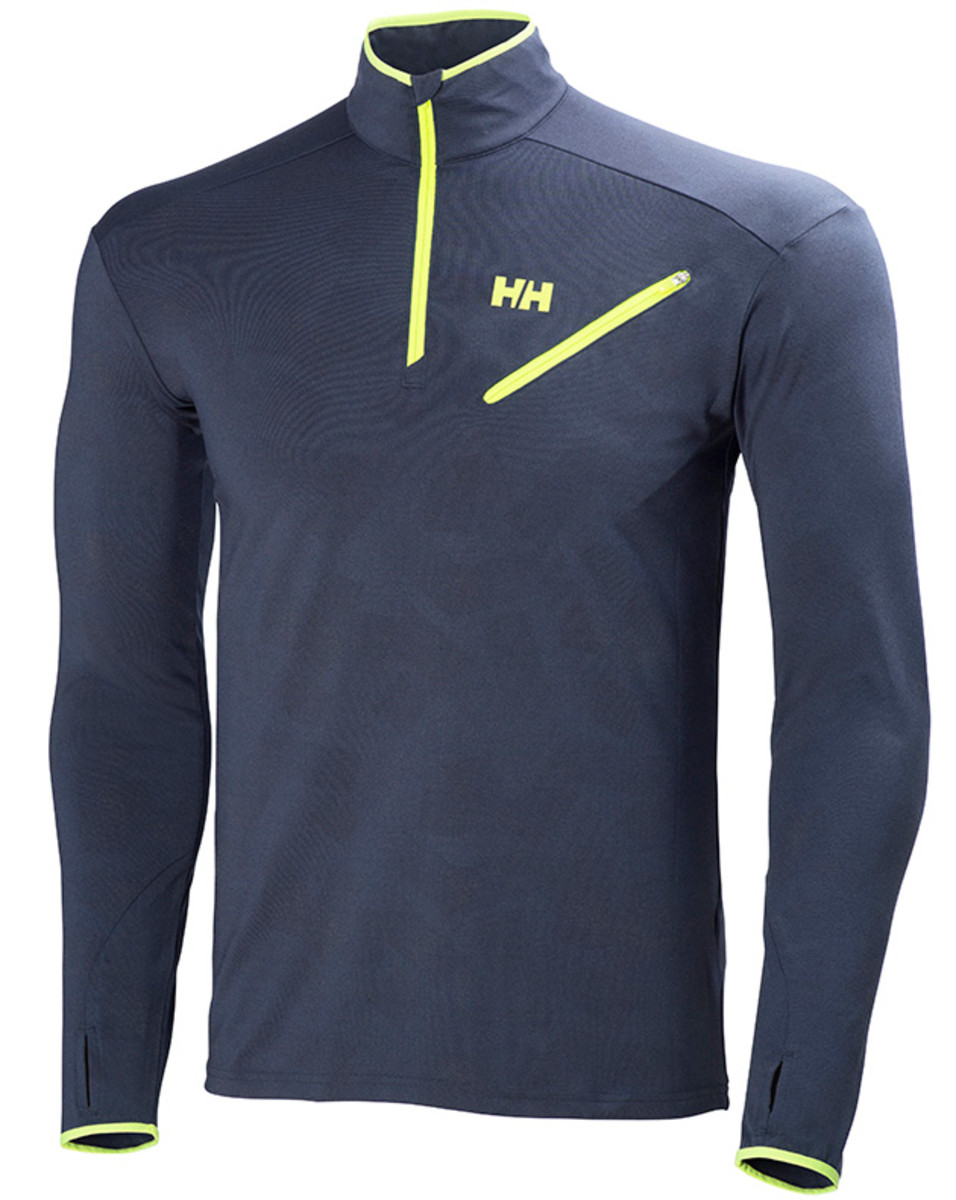Tech Talk: Helly Hansen’s high-visibility gear marked by subtlety

Speaking from Oslo, Norway, Helly Hansen’s manager for training, Philip Tavell, tells SI.com that days get dark early in Scandinavia, but folks still want to be able to run along the road safely, which means they want high-visibility gear. Of course, they don’t always want to wear neon yellow or large reflective bands to get seen. They want gear with subtlety.
What is it?
Norviz technology. The name alone has references to the goal. Combining Nordic with visibility, the new fall 2015 Norviz training line from the Norway-based company puts the focus on visibility. Using an application overlaid on garments, the Norviz technology allows everything from hats, shirts, tights and shoes to look regular during the day, but glow with high reflectivity at night when hit with light.
How does it work?
Working with a fabric mill, Helly Hansen’s partners teamed up to create a spray full of “thousands and thousands” of tiny glass shears. The spray covers garments in patterns—largely unnoticeable in regular light conditions—and in low-light situations the thousands of pieces of glass reflect light back. If a vehicle, motorcycle, bus or even streetlight hits the garment with light, the glass reflects it back.
Why’s it significant?
Tavell says that while traditional neon yellow or large reflective strips work, “you might not always want to look like a Christmas tree.”
“It came about from many years of seeing the same way of executing high-vis products,” he says. Norvis aims to make reflectivity subtler when not in use. As of now, the world of training and running doesn’t have this type of technology, Tavell says.
What are the implications in the world of fitness?
“We live in a very dark environment in the winter time in Scandinavia, but we still go outdoors and train,” Tavell says. “We want (consumers) to feel comfortable, a little more subtle in design, and still have a purpose for the garments.”
Using a spray instead of a specific fabric has allowed Helly Hansen to launch the Norviz technology in a variety of applications. “It definitely allows it to be a functional and comfortable garment during the day without ruining the look and feel,” Tavell says. “Fabrics had a limitation, this gives us the opportunity to play around more.”

What are the downsides?
While spray gives Helly Hansen versatility, it also provides a challenge.
“The next version will definitely (have a focus on) durability,” Tavell says. “We have already started to work with washability so you can wash it without having to worry about the tech going away. That is the only setback so far.”
As of now, the garment, made with Helly Hansen’s training technology, will last longer than the Norviz technology.
Who’s using it already?
Launching the product in a variety of uses has allowed Helly Hansen to see better consumer success than they anticipated. “The functionality and the style has been very well received,” he says. “Most people just look at it and see that there is some design or print, but when they engage, when we show what it is, that is the wow. The subtleness played a big part of it.”
What’s the future of it going forward?
Expect Helly Hansen to improve the durability of the technology while they continue to explore fabric applications. Early on, fabric tests showed that the technology works best with denser fabric to better absorb the spray. As the technology evolves, the interplay between Norviz and fabric should improve, subtly enhancing high visibility.
Tim Newcomb covers stadiums, gear and design for Sports Illustrated. Follow him on Twitter at @tdnewcomb.
